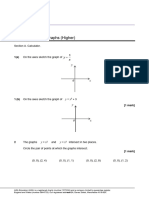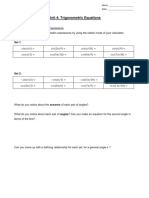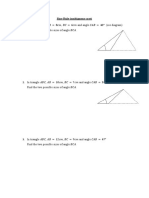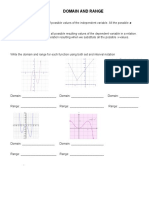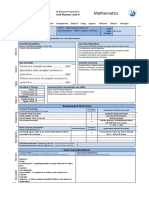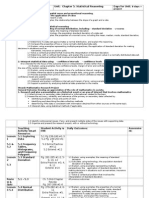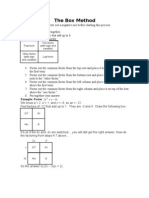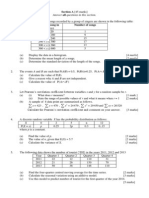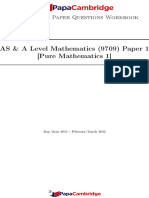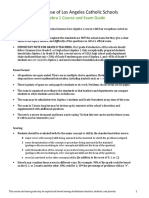0% found this document useful (0 votes)
251 views9 pagesChapter 3 Graphing Linear Equations and Functions
Chapter 3 discusses graphing linear equations and functions. It covers plotting points in the coordinate plane, graphing linear equations using various forms such as slope-intercept and standard forms, finding intercepts to graph equations, determining slope and rate of change, modeling direct variation relationships, and defining key characteristics of linear functions such as domain and range. The chapter establishes concepts needed to graph, analyze, and interpret linear relationships expressed numerically and geometrically.
Uploaded by
Nina HCopyright
© © All Rights Reserved
We take content rights seriously. If you suspect this is your content, claim it here.
Available Formats
Download as PDF, TXT or read online on Scribd
0% found this document useful (0 votes)
251 views9 pagesChapter 3 Graphing Linear Equations and Functions
Chapter 3 discusses graphing linear equations and functions. It covers plotting points in the coordinate plane, graphing linear equations using various forms such as slope-intercept and standard forms, finding intercepts to graph equations, determining slope and rate of change, modeling direct variation relationships, and defining key characteristics of linear functions such as domain and range. The chapter establishes concepts needed to graph, analyze, and interpret linear relationships expressed numerically and geometrically.
Uploaded by
Nina HCopyright
© © All Rights Reserved
We take content rights seriously. If you suspect this is your content, claim it here.
Available Formats
Download as PDF, TXT or read online on Scribd
/ 9




